-
 41675 Hits
41675 Hits
-
 98.72% Score
98.72% Score
-
 88 Votes
88 Votes
|
|
Area/Range |
|---|---|
|
|
43.75530°N / 101.9356°W |
|
|
Hiking, Scrambling |
|
|
Spring, Summer, Fall, Winter |
|
|
Overview
Fairly early on in the film Dances with Wolves, Kevin Costner rides through some open green country that suddenly reveals chromatic gashes and buttes seemingly from nowhere. This is Badlands National Park, a place where the spirit of the great American prairie that once was still lives, a place of endless skies and daunting terrain and the sights and sounds of Buffalo--- the species whose near-eradication finally brought the Plains Indians to their knees, ending a chapter of American history both bloody and tragic, and also helping open the West to the plow and the wheel, paving the way for today’s semi-tame landscapes beyond the confluence of the great Missouri and Mississippi Rivers.
What's in a name? The Spanish called these places El Malpais, "the bad lands." French-Canadian trappers called them les mauvaises terres a traverser, the "bad lands to cross." The Sioux dubbed them mako sica, "land bad." No wonder.
The badlands must have been a dismaying sight to the trappers, traders, and explorers who first beheld them, but today they awe visitors with their ruggedness and their vastness. Air-conditioned cars, ice chests, and lodges all make the park a relatively pleasant place to stay, but a jaunt out among the badlands themselves in summer or winter will quickly remind the wary that this is no gentle landscape and that, as is the case in many of the world’s most spectacular natural settings, there is danger as well as beauty here. Before you go hiking in the crisp winter area, know that the prairie winds are harsh and blizzards on the Plains often bring white-out conditions.
Before you go strolling off in the heat of summer, keep in mind that temperatures frequently exceed 100 F and that you’d better have plenty of water, and keep in mind that you will be very exposed to lightning on the ridges--- there are not many trees out here. Before you stoop down to examine that blooming primrose, make sure you’re not about to step on a rattlesnake or kneel on a prickly pear. And before you go up close to get a picture of those docile bison, remember that they startle easily and can run much faster than you can; many people have died after being trampled or gored by these “cuddly” creatures. I might argue that this is a good thing since the bison are helping weed out the stupid people from among us, but the downside is that the "offending" animals usually have to be killed.
The park is also an outdoor paleontologists’ museum and workplace. The constantly eroding clay buttes here are rich in fossils. The land that today is the park, and much of the surrounding lands, was once the bottom of an ancient sea. Badlands is known or its invertebrate fossils, but the areas outside the park, for reasons scientists do not understand yet, are abundant in fossils of numerous maritime vertebrates, including dinosaurs. If you are lucky enough to find a fossil, remember that it is illegal to remove anything, even a rock, from a national park. “Take only pictures and leave only footprints” is a Golden Rule here and everywhere else in the great outdoors.
Additionally, the park is a test site for efforts to undo some of the wrongs we have done to the land and its original denizens. Bighorn sheep and black-footed ferrets have been reintroduced here. The latter may be the continent’s rarest mammal, but it’s cool knowing that they’re back and again hunting their favorite (actually, only) food: the prairie dog. The attempted eradication of prairie dogs is what drove the ferrets nearly to extinction in the first place.
What to Do
North (Main) Unit
There are not many established trails in the park; most of the ones that do exist are in the Cedar Pass area. For those who do want trails but who want a sense of wilderness and adventure, I recommend the Saddle Pass Trail, about 3 miles east of Cedar Pass, which makes a short, steep climb up badland ridges to the Castle Trail, which runs for about 10 miles east-west between points on the main park road. Off these trails, there are endless opportunities for Class 2 and Class 3 scrambles up ridges to small, delicate summits that yield sweeping views of a sea of shortgrass prairie and badland pinnacles.
Or just park at a turnout and head off on your own.
Sage Creek Wilderness
Near the Pinnacles entrance, a good gravel road heads west and then south to Sage Creek Basin (and beyond). There is no trail system here, and the most rugged of the badlands topography is rather distant, but this is a green area characterized by what seems to be the millions of meanders of Sage Creek and gentler badland buttes. It is a fine place just to roam about, and it is also a fine place to view grazing herds of bison. But watch out for the buffalo pies hidden in the grasses! I stepped in one once, and it was a revolting experience. However, there was also a strange satisfaction that at least there are places where one can still step in a buffalo pie (but I have no plans to do so again and don’t recommend it to anyone else).
Stronghold and Palmer Creek Units
These remote units are south of the main areas of the park and lie entirely within the Pine Ridge Indian Reservation, where there are some different restrictions on usage (see the link to the Park Service site). The park’s only legal 4WD routes are out here, too. I say this not to encourage damaging motorized recreation but because, as an environmentalist and an SUV owner and user (yes, I know many see that as quite contradictory), I see nothing wrong with responsible usage of vehicles on preexisting, open roads as a means of accessing remote areas without hiking epically long distances just to get near them.
Gallery
This section is to showcase some photos member 46and2 attached to this page. They are spectacular.
When to Go
The park is open all year. Snow sometimes closes the main park road, though, so check conditions first if you plan a snow-season visit.
Temperatures can be bitterly cold in the winter and brutally hot in the summer. Spring and fall are the best times to visit, but the spring months are the wettest ones. Expect afternoon thunderstorms on many summer days--- the upshot of that, though, is the dramatic lighting one finds in badlands areas when strong sunlight plays with dark storm clouds.
Caution! ---For you and for the environment, too.
Some badlands ridges have knife edges that can put those on almost any mountain to shame. Stay off them--- they are unstable, which makes it likely that you will hurt or kill yourself AND wreck the scenery.
Otherwise, the badlands are reasonably safe to hike and climb when they are dry, and they withstand the light usage they receive. No one in his or her right mind would use technical climbing equipment on most badlands formations, but I will say it, anyway: don’t try fixing rope or other protective equipment (but wearing a helmet may still be smart in case you take a tumble).
Also, avoid the badlands when conditions are wet. The clays turn to a gumbo that is both tedious and dangerous. Again, you will put yourself at great risk and also risk ruining the spectacular features the park protects.
Finally, stick to the ridges or don’t climb at all. The ridges are often much broader than they appear to be from other perspectives, and they are mostly well-packed and can take some occasional feet. The other slopes and faces are more friable, and ascents of them could cause significant environmental damage and prove disastrous to you as well.
Take care of yourself and the badlands--- these features are the harder rock that has withstood erosion better than what fills all the washes, but they are no Yosemite
granite. If a formation seems loose or crumbly, get off it for both your sakes.
Getting There
There are several different ways to approach Badlands National Park. The two easiest and fastest are via Interstate 90, and it is those I will cover. One of the neat things is that the drives give no indication of what is to come. Once you are inside the park, another world opens up as you view the mighty Badlands Wall, a nearly unbroken stretch of high ridges and pinnacles running east-west the length of the park.
About an hour’s drive east from Rapid City, look for and take exit 110, signed for Wall and for the park. Follow signs and Route 240 to the park’s Pinnacles Entrance. One of the first of many overlooks and pullouts is the Pinnacles Overlook, where you get a sweeping view of the sprawling, wild Sage Creek Wilderness.
If you are approaching on I-90 from the east, get off the highway at Exit 131, signed for the park and for Cactus Flat, and follow Route 240 to the Northeast Entrance.
Route 240, paved all the way, makes for a 50-mile trip through some of the park’s best scenery. Badlands is an easy park to visit on a passing-through basis, but I strongly encourage you to spend at least a full day here if not one or two nights.
A warning about Wall Drug: In every state of this great country, you can find a car sporting a Wall Drug bumper sticker. This may make you think the place is some quaint store with intense customer loyalty. It is not. If you need gas, ice, or other basic supplies, get them in Rapid City or in a convenience store located close to the highway exits for the park.
I am not quite sure how to describe Wall Drug. It is one of those places with that cheesy Old West design on the outside and filled inside with shops selling the kinds of things fathers and teachers (alas, I am both) get as gifts. It is like a shopping mall posing as something from the Wild West. My brother and I actually had to spend a miserable hour there once because his blisters had made him seek hiking sandals there before entering the park (he didn’t find any, and I was ready to kill him for going there in spite of my admonitions).
Red Tape
There is an entrance fee of $15 good for a week. Aside from that, there is no other red tape of which I know. Badlands is not a crowded park, and visitors have a lot of freedom to explore and enjoy the park.
Camping
Camping in Badlands National Park can be a very enjoyable experience. The sky, free of light pollution, displays the stars in all their glory. Coyotes make their eerie calls. The calls of owls echo in the dark.
There is a developed campground at the Cedar Pass area, where there is also a lodge, restaurant, gift shop, and visitor center. There is a camping fee.
Another camping option is in the Sage Creek Wilderness. A good gravel road leads to this primitive camping area where there are no designated sites, no water, and no toilets. There is also no camping fee. Be prepared for bison to literally wander through your campsite.
A third option is to backpack in. Badlands is one of the few national parks that does not require backcountry camping permits, and the absence of many trails means you have some incredible opportunities for exploration and solitude. Remember not to camp in dry washes, no matter how soft the sand in them may be.
Help Make This a Great Page!
There are very few named badlands features in the park, so if you do climb some and want to add them here, please nickname them and provide detiled descriptions of how to find them.
Another great addition would be a TR describing some ridgeline exploration out here.
Of course, photos are always welcome, too!
External Links
Why this page?
Why is this page here?
SP members who think this site should be strictly about technical climbing will probably cringe at this page. Where are the mountains or the rock walls? In fairness, I do sympathize with the sentiment that SP should revert to a site with pages and images solely about climbs and the views of/from/along them (in fact, I would go so far as to say SP should be only about mountains), but SPV2 diversified the site and opened many new doors. I, as well as many others, including people who are more accomplished climbers than I am, have walked through those doors. Slippery slopes? No doubt. But I think the presence of this page on SP is within reason, and I won’t post a six-foot hill from Florida or anything else of that nature.
Let me make just three points in defense of creating this page:
1. This is an area/range page, not a mountain/rock.
2. There are already SP mountain/rock pages for named badland formations elsewhere. One good example is Manly Beacon.
3. There is climbing here, but it really depends on what your definition of climbing is, though some might call that statement Clintonian. The “rock” here is not suitable for technical climbing, probably not even for Class 4 climbing, but the summits of the myriad badland pinnacles (the climbable ones) require Class 2 hiking or Class 3 scrambling on what can be extremely treacherous terrain. No, the pinnacles do not soar thousands of feet above their surroundings, but they are quite prominent in their area. And what do you get atop them? Solitary, inspiring vantages of a classic Western wilderness.
So please give this page a chance!




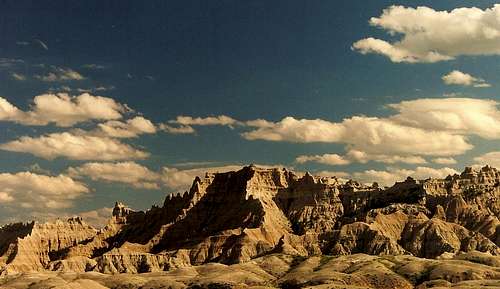

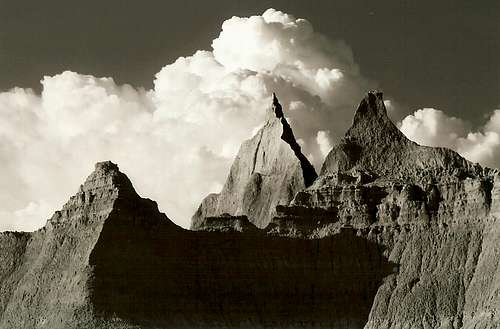
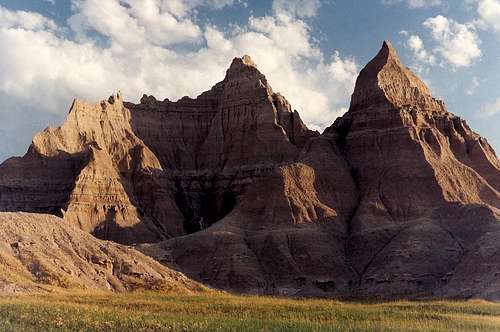
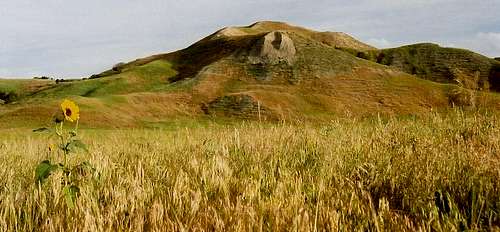
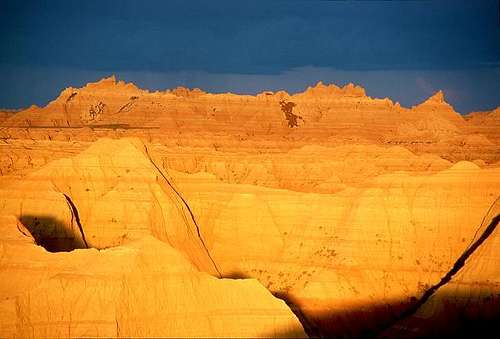

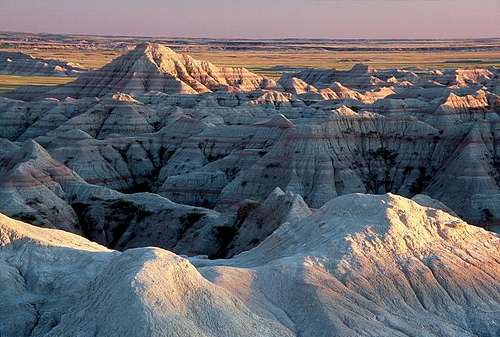

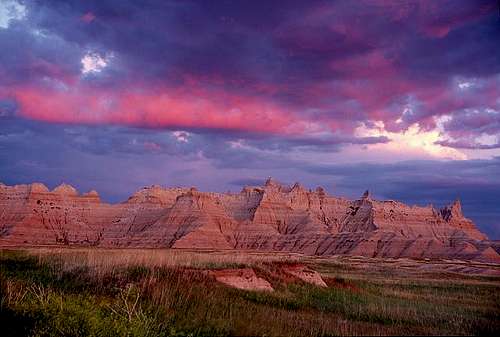


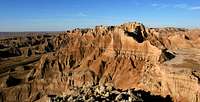
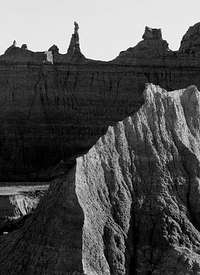
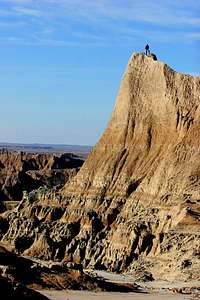
Hotoven - Apr 20, 2009 3:46 pm - Voted 10/10
Sweet park!I love this park. Both time I was there the wind dominated our tent breaking them both for good.
Bob Sihler - Apr 20, 2009 9:27 pm - Hasn't voted
Re: Sweet park!Always worth a visit here. Always something great to see and do. I'm glad I didn't have those wind issues either time I went, though I did get snowed out back in April 1999!